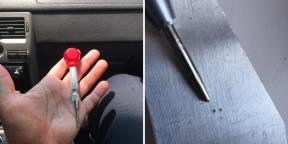Study: A cup of takeaway coffee contains trillions of microplastic particles
Miscellaneous / / April 23, 2022
The main problem is the size of these particles - they are so small that they can easily penetrate human cells.
Pollution of the environment with plastic waste is a huge problem. Its solution is and will be given the closest attention. Recently, however, scientists have become increasingly concerned about what happens after the plastic breaks down into smaller particles.
To study this issue, scientists from the US National Institute of Standards and Technology (NIST) conducted a new studyCommon Single-Use Consumer Plastic Products Release Trillions of Sub-100 nm Nanoparticles per Liter into Water during Normal Use. In it, they studied how tiny plates can be released from common plastic products, including food-grade nylon and disposable cups. coffeewhich are internally coated with a low-density polyethylene (LDPE) film.
The cups were exposed to boiling water for 20 minutes. To count the tiny particles of plastic in a liquid, the scientists turned to a method used to detection of tiny particles in the atmosphere, which uses dehumidification and exposure to hot alcohol vapor. So the plates swelled and increased in size, which greatly simplified their calculation and study of the chemical composition.
Further analysis revealed trillions of particles with an average size of 30 to 80 nanometers and a few particles larger than 200 nanometers. In parallel experiments with food-grade nylon, the number of particles was seven times greater.
“The main takeaway here is that plastic particles are everywhere we look. There are a lot of them. Trillions per litre. We do not know if they have harmful effects on human or animal health. We just have high confidence that they are everywhere.”
Christopher Sangmeister
NIST chemist
The significance of this study lies in the size of the particles. These microscopic pieces of plastic are small enough to penetrate human cells. What happens when they are inside is still an open question for scientists from NIST. Although other similar researchA rapid review and meta-regression analyzes of the toxicological impacts of microplastic exposure in human cells evidence of harmful effects - plastic particles can change the shape of human lung cells and have a wider toxic effect on other cells.
Read also🧐
- 10 things it's time to stop buying: opinions of web users
- How plastic food packaging affects our health
- Scientists told how much microplastic we eat and how to reduce its amount



